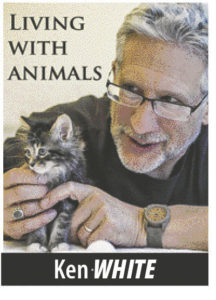What we eat is based on many factors. Economics. Availability. Health. Culture. Personal taste. Ethics. Those factors lead to lots of labels. Omnivore. Carnivore. Vegetarian. Pescatarian (vegetarian diet plus fish and seafood). Vegan. Fruitarian (yes, that’s a real thing. Someone who eats only what can be taken from a plant without killing or harming that plant. In the extreme version, fruitarians only eat what naturally falls from a plant.). But whether you’re deep-frying a bird Thursday or dining on the soy substitute tofu-rkey (yes, that too is a real thing), I suggest we all pause to consider those birds as animals (not just main courses) ahead of the holiday. To be clear, this is not an argument for a vegetarian diet. Rather, this is me just asking us to be mindful, if even briefly, of who we are eating on Thursday since, by most estimates, we will eat a startling 46 million turkeys this one day.
First, some fact checking. The pilgrims did not dine on turkeys for their feasts of thanks. Nope. It was Charles Dickens who popularized turkey as a holiday meal with A Christmas Carol. (Remember? Scrooge, finally enlightened, sends a big bird to the Cratchits.) Turkeys can fly. Turkeys do not drown looking up with curiosity when it rains. (Think about it. With eyes on both sides rather than in front, looking up would actually mean looking out.)
Like all animals, turkeys evolved to fill an environmental niche. Wild turkeys forage for acorns, berries, insects and small snakes and, in turn, are preyed upon by raccoons, foxes and, when young, by eagles and hawks. They are polygamous, females laying a clutch of a dozen or so eggs in shallow ground nests, hatching out babies after a month who are ready to be on their own within a day. Oh, and the tale that Ben Franklin proposed turkey as our national symbol is apparent poppycock although he did prefer the choice over that of the bald eagle, noting the eagle as an essentially lazy animal while the turkey a bird of courage willing to defend his farmyard.

